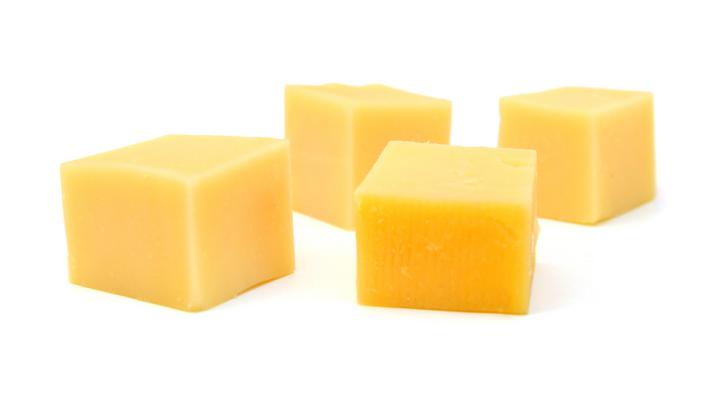Cheddar is a ripened hard cheese compliant with the general cheese regulation (Codex stan 283-1978).
Cheddar is probably the most popular cheese in the world. It is firm, hard and may be coloured.
Cheese taste varies depending on ripening. A young Cheddar will be mild, an older cheddar will be sharp.
Cheddar is an unpressed cheese.
The main manufacturing steps are the following:
- Pretreatment of milk / pasteurisation: to eliminate bacteria that may affect cheese quality.
Pasteurisation, by its pathogenic germ destruction actions and microorganism quantity reduction, helps the development of lactic starter. Lactic starter intervenes in lactic acid formation by lactose.
- Initiation culture: bacteria culture and rennet are added to determine flavour and separate curd from serum.
Bacterial strains are mainly used in order to produce acid and therefore contribute to protein breakdown.
Helped by rennet, lactic acid leads to casein coagulation and more precisely curd formation. This preparation is then cut, mixed, heated at high temperature to extract whey from curd.
- Separation by agitation: curd grains are mixed to make whey evacuation easier.
- Cheddarisation: specific step in cheddar manufacturing. During this step, curd grains solder together to constitute a big block of cheese. Texture becomes fibrous.
- Salting, drained anew: curd grains are then salted and drained again.
- Moulding: blocks are forming by gravity in the moulding tubes.
- Ripening, depending on ripeness we obtain:
- Cheddar curd
- Mild Cheddar
- Medium Cheddar
- Strong / extra strong Cheddar
Through the transformation of some lipid and protein components, this ageing period helps develop the taste.
Cheddar is used for its sharp flavour, its colour and its nutritional value. It is indeed rich in proteins (25%), in D, B12, A and E vitamins, in calcium, in phosphorus, in riboflavin and in niacin.
Humidity content is more or less 39%, and fat content is 33%.
